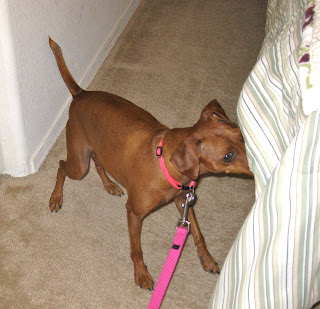Recently I have been asked by quite a few people "
what about traps for bed bugs"? In this post I will discuss some points on the use of traps and some of the various types of traps that are available.
Traps for bed bugs are mostly simple in design and there are very few types. However many people are trying to create a trap solution that could be effective against bed bugs and in the future we are likely to see more of these becoming available. It is important to keep in mind that using traps for bed bugs is
not a method for eradication. At this point in time, it is merely a tool to be used in the effort to detect the presence of bed bugs.
Some studies have been done on what attracts bed bugs, in an attempt to attract the bed bug to a trap. There are 3 attractants identified so far. They are CO2, heat and chemicals. The research has shown that C02 is the most effective attractant, while heat alone is also effective. Chemical lures show weak results.
The type of traps to be used depends on the circumstances, for example where there is furniture without legs or the furniture legs are not shaped a certain way, traps such as the "
Climb-Up" will not work. This type of trap is known as an 'interceptor'. Interceptors do not completely prevent bed bugs from accessing sleeping and
resting areas, the inner well is prone to
breaking under weight of furniture when carpet is present and they require maintenance (cleaning and re-lubrication) on regular basis. Additionally, interceptors need to be placed for at
least a week or longer to detect bed bugs at very low numbers. These may not be suitable for a hotel situation where seeing such traps may alarm guests (especially if a bed bug or any other insect has wandered into one).
An interceptor type 'trap' for bed bugs (made by Climb-Up).
Dr. Changlu Wang at Rutgers University has developed a bed bug trap that utilizes dry ice to produce C02.
This is not available commercially but might give you an idea of some of the work that is being done to create effective traps. PLEASE NOTE; there are some inherent safety risks that are associated with dry ice. DRY ICE REQUIRES SAFE HANDLING. Please do not try to use dry ice yourself at home if you have not been trained to handle it properly.
The carbon dioxide (C02)
it creates can suffocate and be deadly for you and your loved ones.
C02 traps are known as "active monitors". At this time, there are 2 commercially manufactured C02 traps available,
the NightWatch® Bed Bug Trap (manufactured by Biosensory) the CDC 3000
(manufactured by Cimex Science).
There are also several types of 'monitors' available, some claim to use attractants and other simply provide an attractive hiding place for bed bugs. These can be placed in suspect areas and routinely checked for the presence of bed bugs.
Is is important to state again that while these types of monitoring tools
and methods exist, and they have improved recently, there is no tool or method that is
completely reliable in detecting bed bugs. Therefore, regardless
of what method or device is used, the failure to identify bugs
cannot be used as an indicator that no bugs are present. Low level
infestations can escape detection regardless of the detection
methods implemented, although a well trained scent detection dog has the highest accuracy rates (about 90-98% in clinical research).
If you are serious about early detection, a bed bug dog is more likely to be money well spent and trained bed bug dogs are certainly the best bet when large areas are to be searched. As KILOHANA K9s always stresses, bed bugs are not a do-it-yourself problem, please contact trained professionals to assist you safely!
3 types of active monitors; 1) CDC 3000, 2) NightWatch
and 3) a trap utilizing C02.
Here is someone's home-made idea. The person utilizing this method is apparently attempting to stop the bed bugs from coming and going from the bed (a somewhat futile exercise in my opinion), however it may help after a period of time has passed, to identify the presence of bed bugs, simply because if one did get into this container it might have a hard time climbing out (bed bugs are not very good climbers on really smooth surfaces).




















.jpg)

























